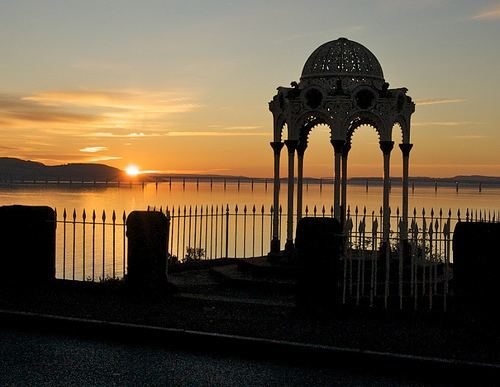Population 7,922 Post town NEWPORT-ON-TAY Local time Sunday 11:42 AM Dialling code 01382 | OS grid reference NO421279 Sovereign state United Kingdom Postcode district DD6 Lieutenancy area Fife | |
 | ||
Weather 10°C, Wind SW at 6 km/h, 66% Humidity | ||
newport on tay a place to be episode 3
Newport-on-Tay is a small town in the north-east of Fife in Scotland, acting as a commuter suburb for Dundee. The Fife Coastal Path passes through Newport-on-Tay. The area itself is surrounded by views of the two bridges that cross the River Tay and distant views of the Scottish Highlands.
Contents
- newport on tay a place to be episode 3
- Map of Newport on Tay UK
- Fife bikers newport on tay fife scotland 1966 hd
- History
- Archaeology
- Present
- Local Amenities
- Newport on Tay and the Arts
- References
Map of Newport-on-Tay, UK
Fife bikers newport on tay fife scotland 1966 hd
History
The town was established near the endpoint of one part of a ferry route that itself was started in the 12th century.
In 1715 a new pier and inn were built, the work being funded by the Guilds of Dundee which resulted in the settlement being called "New Dundee". Thomas Telford built a new harbour in the 1820s, and the town expanded and grew into a commuter suburb of Dundee as the prosperous jute manufacturers, industrialists and the middle and upper working class of Dundee established fashionable residences in Newport.
Newport-on-Tay formerly had two railway stations - the East and West stations on what was the Newport Railway. Both stations (and the Tayport-Dundee branch line) closed in 1969, having lost much of their business following the opening of the Tay Road Bridge in 1966. In fact, trains had ceased to run beyond Newport-on-Tay East station to Tayport on 22 May 1966 so that the railway line could be breached to build the bridge's southern approach road. The Dundee - Newport ferry also closed promptly later in 1966 on the opening of the Tay Road Bridge. However, the ferry terminal buildings and slipways still survive at the foot of Boat Hill as a boat repair yard.
Archaeology
An excavation carried out by Headland Archaeology in the farm of North Straiton near Newport-on-Tay uncovered part of a Bronze Age cremation cemetery and a line of postholes. Five human cremations were found in a group of scattered disposal pits. Around 25m away was a line of postholes, one of which was also associated with cremated human bone. Radiocarbon dates from the features indicated that they had been created in the Bronze Age, from around 1700 to 2000 BC.
The line of posts was substantial and may have been associated with the cremations rather than a building or fence. It is possible that the posts may have been memorials or markers close to the pyre used to burn the dead. Part of a quern stone and some burnt animal bone suggested that the cremation ceremony also involved preparing food. A collection of pottery was found with the cremations. This included a complete accessory vessel and fragments from a larger decorated pot that covered it.
Present
Newport currently has a population of about eight thousand, mostly residing in stone houses built before World War II. The town centre comprises two main streets where may be found a small variety of shops and two public houses. The town has one primary school, Newport Primary, with older pupils attending secondary school in St Andrews, in Cupar, or at the nearest independent school, the High School of Dundee.
Public bus routes are the 77 to Dundee, 92 to St Andrews, 42 to Cupar, the X54 to Edinburgh via Glenrothes and Dunfermline and the X42 to Kirkcaldy via Ladybank.
Newport is twinned with Zolotarevo, Ukraine.
Local Amenities
Amenities on and around the High Street include food and drink stores, health and beauty outlets, trades and services, a variety of shops, an art gallery and a sports centre.
There are four churches:
Newport-on-Tay and the Arts
The arts have played a major role in the shaping of Newport and its neighbourhood. In 1905 the Tayport Artist Circle Art Union was formed, made up of such painters as Alec Grieve, Stewart Carmichael and the so-called "Painters painter" David Foggie. Led by Frank Laing, their aim was to have an influence through art on the industrial environment; this is explained in a letter from Laing to the famous town planner/architect Patrick Geddes.
Many teachers of fine art in the University of Dundee's Duncan of Jordanstone College of Art and Design have migrated towards Newport-on-Tay and its north-west facing position for the incredible quality of light. Such heavy-weights in the Scottish art scene as John Byrne, Will Maclean and Marian Leven are associated with the area. A local community arts centre, The Forgan Arts, provides numerous courses in many disciplines of arts and crafts.
Recently the opening of a major art gallery by the established artist Helen Glassford has continued the aims of the Tayport circle by having the simple ethos that art should improve people's environments and so their health. Another Newport artist, the autistic savant Richard Wawro, showed with his works in crayon how art can be a bridge in health issues. This new hub, The Tatha Gallery, has already established a circle of Royal Scottish Academy members who have befriended it including Alan Robb, Joyce W Cairns, Doug Cocker, Alastair Ross, Grant Clifford, Francis Walker and Ronnie Forbes
